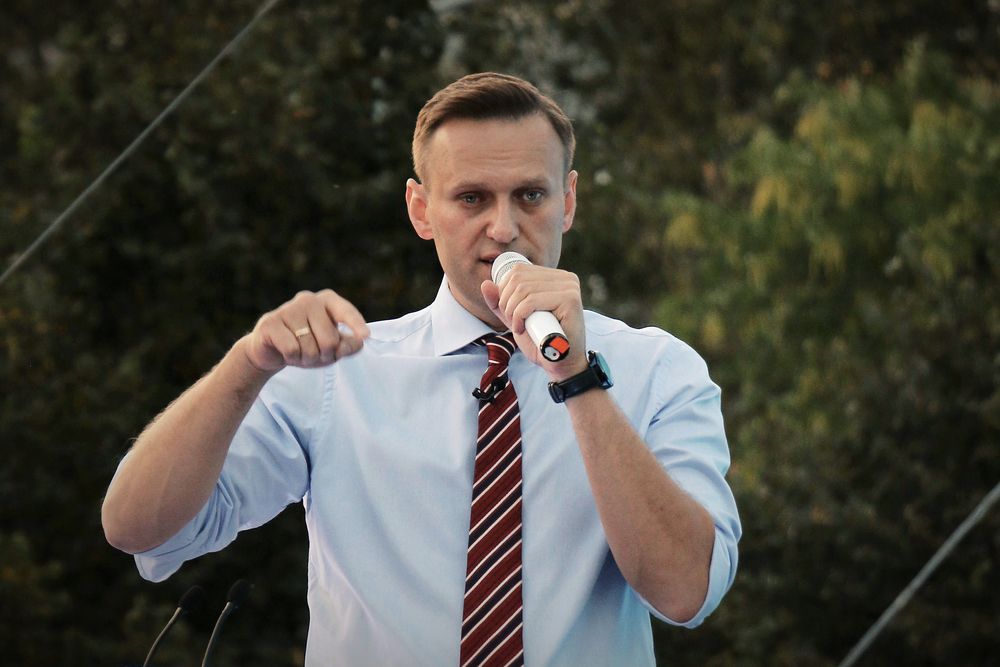Alexei Navalny, a famous Russian politician, could have chosen to live in exile, like the businessman Mikhail Khodorkovsky or Leon Trotsky before him. But Navalny chose his own path, which was tragically interrupted last week by Russian leader Vladimir Putin.
On the day of Navalny’s death, Putin spoke on state TV. He seemed unusually delighted, commenting about how successfully his economy was surviving under the pressure of Western sanctions. He didn’t mention Navalny, but his joy was poorly hidden.
Kremlin-controlled media and propagandists didn’t ignore death of Navalny, Russia’s most popular opposition politician, but reacted in their usual way, blaming the “Collective West” and Russian opposition for the death of the most guarded prisoner in Russia’s worst jail.
“The immediate reaction of NATO leaders to Navalny’s death in the form of direct accusations against Russia is self-exposing,” commented Russian Ministry of Foreign Affairs spokeswoman, Maria Zakharova. Pro-Putin TV-show propagandist Anatoly Kuzichev insisted that “there was no point in killing” Navalny because he was “safely forgotten even by his associates.”
The Russian opposition and Western leaders agree that, whether it was a murder or a natural death caused by prior poisoning and inhumane conditions in prison, Putin should be held completely accountable. However, the death has all the hallmarks of a Stalinist approach to opposition and is consistent with the more recent history of political assassination in Russia. Moreover, in the current presidential election campaign, Putin has not tolerated any real opposition candidates, and Navalny in prison still represented at least a hypothetical alternative.
Even if an opposition figure is long forgotten by everyone, Russian intelligence operatives will still pursue him, regardless of how harmless he might be to the current Russian state. Recall the story of Leon Trotsky, assassinated in Mexico at the age of 61 after being followed for four years by Russian agents.
Navalny’s story, however, speaks for itself and does not require historical analogies. In 2020, he was poisoned with a military material known as Novichok but survived. Putin’s hand was also likely behind this attempted assassination.
Today, the Russian authorities aren’t trying very hard to cover their tracks, Several details point to the Kremlin.
The official version of Navalny’s death contains strange inaccuracies. The ambulance reportedly reached the penal colony in seven minutes, having covered 35 kilometers—the distance from Labytnangi to the village of Kharp—at a speed of almost 186 miles per hour.
Additionally, the official date and cause of death changed from February 15 to February 16 and from “blood clot” to “sudden death syndrome.” Doctors usually associate the second with infant death. The first diagnosis, meanwhile, cannot be established before an autopsy, and it is usually given to victims of torture in Russian prisons to justify the sudden death of a healthy person. Navalny really looked cheerful and healthy the day before his death, as shown in the video for a courtroom appeal on Thursday.
According to the testimony of one of the prisoners the day before Navalny’s officially announced death, a strange bustle began: the prisoners were locked in the barracks earlier than usual, and the same night some cars began to drive into the territory of the colony. In the morning, total searches took place, and mobile phones were confiscated from prisoners. Navalny’s family and his lawyer have still not been given his body.
There is also an American factor. A Russian Telegram channel associated with self-declared ex-officers of Russian foreign intelligence claims that the Kremlin allegedly tried to offer Navalny to the United States in exchange for Vadim Krasikov, jailed in Germany in connection to the murder of a former Chechen fighter, but the United States did not agree to act as a negotiator in this process. Along with Putin’s electoral paranoia, this non-action by the United States allegedly prompted the Kremlin to eliminate Navalny.
However far-fetched, the American factor in this whole story should not be underestimated. Former President Donald Trump’s statement encouraging Russia to “do whatever the hell they want” to NATO allies and the persistent reluctance of House Speaker Mike Johnson to put to a vote a bill on financial assistance to Ukraine could be interpreted by the Kremlin as a clear call to action. Putin, like an old judoka, takes advantage of his enemy’s soft spots, especially those that he himself has been weakening persistently.
Given Navalny’s death and the ongoing Russian attack on the whole Ukrainian front line, it is risky to underestimate Putinism. A number of Western politicians, and even Russian opposionists like Navalny, thought that Putin wouldn’t act like an outright mafioso by killing his opponents outright. But then came the destruction of the plane carrying former Wagner Group head Yevgeny Prigozhin. And now Navalny’s death. Putin’s goals of a wider invasion have moved into a sphere similar to that of Adolf Hitler or Vladimir Lenin. Putin’s imperialist Russia wants to absorb Europe or, his jingoist supporters put it, “to expand Russia from sea to sea.” This vision has nothing in common with Navalny’s Beautiful Russia.

